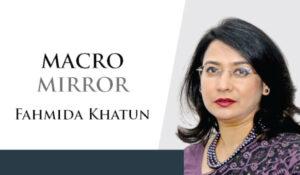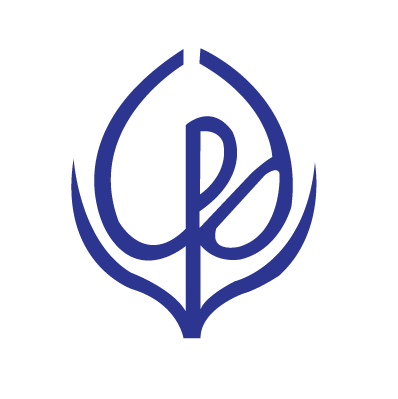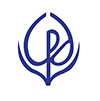Originally posted in The Daily Star on 11 February 2025
 Despite having 171 universities, higher education in Bangladesh faces several challenges as the quality of education in many of these institutions remains substandard. Though public universities are subsidised, they fail to meet international academic standards, affecting their global rankings and the employability of their graduates. Many private universities, too, have questionable educational standards, although some offer innovative programmes. It is perceived that some private universities “sell” degrees rather than provide quality education. There is a significant mismatch between the academic outputs of universities and the actual demands of the labour market. As a result, many graduates fail to secure employment that matches their qualifications. The Labour Force Survey (LFS) 2022 indicates that the unemployment rate is highest among those with tertiary education; it is 12 percent compared to 8.78 percent and 2.82 percent among those with higher secondary and secondary education, respectively.
Despite having 171 universities, higher education in Bangladesh faces several challenges as the quality of education in many of these institutions remains substandard. Though public universities are subsidised, they fail to meet international academic standards, affecting their global rankings and the employability of their graduates. Many private universities, too, have questionable educational standards, although some offer innovative programmes. It is perceived that some private universities “sell” degrees rather than provide quality education. There is a significant mismatch between the academic outputs of universities and the actual demands of the labour market. As a result, many graduates fail to secure employment that matches their qualifications. The Labour Force Survey (LFS) 2022 indicates that the unemployment rate is highest among those with tertiary education; it is 12 percent compared to 8.78 percent and 2.82 percent among those with higher secondary and secondary education, respectively.

Underinvestment in education, along with the consistently low government funding in the tertiary sector, creates a significant barrier to improving the quality of higher education in the country. Between FY2016 and FY2024, government expenditure on tertiary education has remained at around one percent of the total revised budget of the respective fiscal years, according to ministry documents. Insufficient funding has limited the universities’ ability to enhance their academic offerings and invest in infrastructure, technology and faculty development.
While this is the state of education quality, the students of Government Titumir College are demanding an upgrade of their institution to the university status. For several days, they protested and blocked roads in the capital city pressing their demands, which caused public suffering. The education adviser was adamant that he would not take any hasty decision under pressure. He also mentioned that half of the public universities in Bangladesh have been established during the past seven years, although it takes years to set up a university.
Under the circumstances, the students’ desire to convert a college into a university raises a critical question: will such a move improve the quality of higher education, or will it be a mere cosmetic change that risks deterioration of academic standards further?
Merely converting colleges that lack high education quality into universities will not resolve the fundamental issues facing the education sector. Changing the status of a college to a university does not automatically elevate its academic standing or enhance the prospects of its graduates to obtain jobs. Some of the world’s most prestigious tertiary education institutions still have the terms “college” and even “school” in their names, and that does not diminish their reputation. In fact, many of these colleges and schools are world leaders in education and research. In the US, graduates of many liberal arts colleges are sought after by leading companies and graduate programmes because of the colleges’ academic excellence and high reputation. Neither the students nor the recruiters have any qualms about the term “college.”
Turning colleges into universities is not a sustainable solution and could ultimately harm the country’s higher education landscape. Instead, the government should focus on comprehensive reforms that emphasise quality, innovation, and employability to ensure that the country’s higher education system meets the global standard. Policymakers need to adopt a more pragmatic approach, focusing on improving the academic environment in the existing colleges rather than upgrading them to universities. Quality should be prioritised over quantity.
Therefore, the government should invest in improving the infrastructure, recruiting qualified faculty members, and ensuring modern, research-driven curricula in the existing institutions to transform colleges into centres of excellence. Strong governance, innovative teaching, effective research, and active involvement of the faculty and students in academic development are vital. Collaborations with international institutions, faculty development programmes, and expanding research funding are crucial for enhancing the quality of education in these colleges. A robust accreditation system to evaluate the quality of both colleges and universities is needed to maintain standards and ensure that students receive the education they deserve.
The key to improving higher education is not in the number of universities but in creating institutions that provide students with a transformative learning experience. A radical step by the government could be the merger of similar educational institutions and universities that complement each other, to strengthen their academic capacity and improve competitiveness. This will not reduce the number of students or facilities. Physical campuses of the merged universities will still exist, but will operate under one university. In the case of private universities, the government can set some minimum thresholds for educational outcomes with specific deadlines. Those who fail to meet the minimum educational standards can be subject to merger with others. Students will benefit from the quality and reputation of the institution.
This merger of universities will optimise limited educational resources and improve cooperation between institutions, as well as help to overcome the fragmentation in the higher education system and improve efficiency. Such mergers will allow universities to pool resources, attract top faculty, and improve teaching and research capabilities. There are successful examples of mergers of universities and educational institutions in several countries, including Australia, China, Japan, the Netherlands, Norway, and the US. Though,costs will be incurred initially for planning, coordination and implementation, in the long run, there will be some economies of scale, particularly with regard to shared systems like libraries, ICT infrastructure, and management systems.
Some of the most pressing issues that have continued to afflict Bangladesh’s higher education system for years include inadequate government funding, outdated curricula, a shortage of qualified faculty members, and political interference affecting academic freedom. Unhealthy and violent student politics on campuses further undermine the academic environment. Besides increased government funding, improved access to technology and systemic reforms to improve education quality are required to ensure that the workforce is adequately prepared for the demands of both the domestic and global labour markets. A merit-based recruitment system for university teachers, safeguarding of academic freedom, and operational autonomy of universities to protect them from political interference should be part of the reform.
Improving the quality of higher education also requires a long-term vision and a willingness to adopt best practices from successful models. By learning from the experiences of other countries, Bangladesh can take meaningful steps towards building a modern, competitive higher education system that meets the needs of its students and the broader economy.
Dr Fahmida Khatun is executive director at the Centre for Policy Dialogue (CPD) and non-resident senior fellow at the Atlantic Council.
Views expressed in this article are the author’s own.



